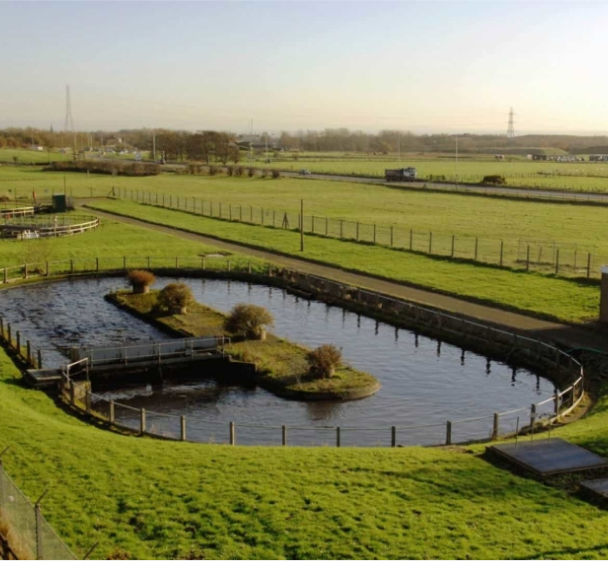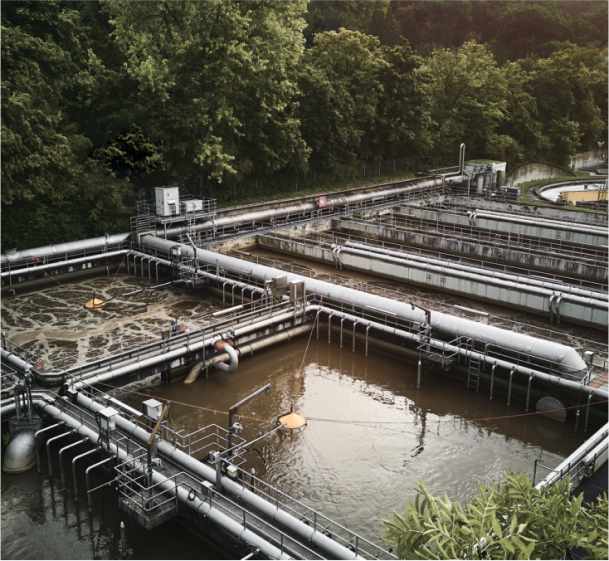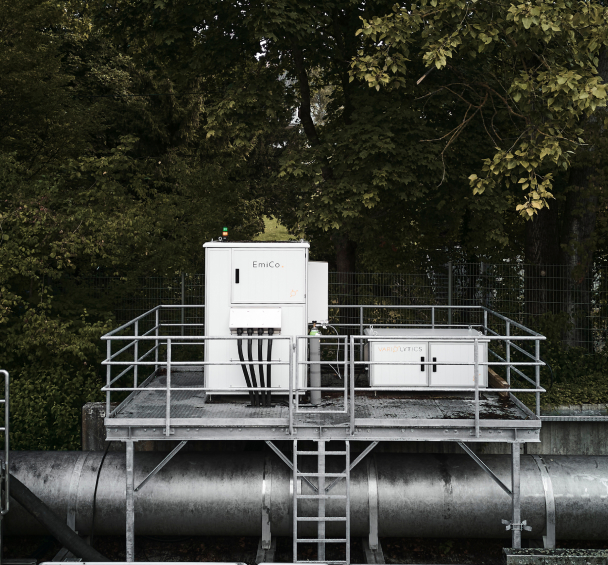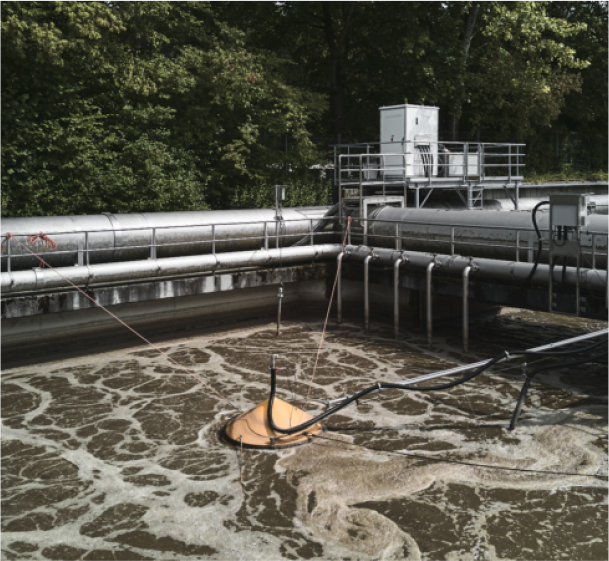Wastewater monitoring for treatment plants
In the biological cleaning stage in wastewater treatment plants, a considerable amount of energy is required to achieve a perfect result. Too little gassing in biological wastewater treatment leads to an increase in the direct emission of greenhouse gases, such as nitrous oxide and methane, from the aeration tanks This results in more energy being used for gassing than necessary. Optimizing the gassing performance therefore holds great potential for saving energy costs and thus also indirect CO2 emissions. Variolytics addresses this optimization issue with reliable wastewater monitoring technology. Variolytics technology for optimizing processes in wastewater treatment plants helps operators save energy costs as well as chemicals and reduce the generation of greenhouse gases in aeration tanks.
Communal Wastewater Treatment Plants
The European Union wants to achieve greenhouse gas neutrality by 2050. Germany wants to achieve the climate target as early as 2045. The Climate Act specifies that greenhouse gas emissions must be reduced to a minimum in all activities and that there must be no further increase in greenhouse gas concentrations.

Advantages of wastewater monitoring for Communal Treatment Plants

Industrial Wastewater Treatment Plants
Water is an essential component in most production processes. The process water is often contaminated, which is why it is necessary to treat industrial wastewater in a wastewater treatment plant. Due to the diverse chemicals used in the process, process analytics is particularly important. Excessive concentrations of toxic chemicals can cause the biology in aeration basins to die and shut down the wastewater treatment plant.
Advantages of wastewater monitoring for Industrial Treatment Plants
Sample Measurements
In the following section, measurements previously performed in the laboratory with our liquid analyzer Vario one. are shown. The liquid inlet of the membrane inlet mass spectrometer allows substances to be measured directly and online from the liquid. A standard membrane is used. Select the substance of which you want to view the measurement. Then the corresponding experiment is displayed with all results and data. Click through the interactive graphs to view individual measurement points.
Greenhouse Gas Measurements
Wastewater processing in sewage treatment plants produces greenhouse gases that are harmful to the environment. The gases carbon dioxide, methane and nitrous oxide are among the relevant emissions from wastewater treatment plants. In this context, nitrous oxide has a greenhouse gas effect almost 300 times greater than CO2. For 2018, the amount of direct emissions from municipal wastewater treatment was estimated at almost 1 million tons of CO2 equivalents; almost half of this can be attributed to nitrous oxide emissions. With the monitoring system from Variolytics, these relevant greenhouse gas emissions can be measured permanently online from the liquid and gaseous phase and their respective concentrations can be determined. Below you will find the measurements of nitrous oxide (N2O), methane (CH4) and carbon dioxide (CO2). Feel free to click through the measured gases and our associated interactive graphs.


The effects of nitrous oxide
The impact of nitrous oxide (nitrous oxide) on global warming is significant. In fact, N₂O emissions have 273 times greater global warming potential than carbon dioxide (CO₂). This means that N₂O per molecule can bind heat in the atmosphere much more effectively than CO₂ and thus contributes significantly to the greenhouse effect. Given the significant impact of nitrous oxide on global warming, efforts to reduce these emissions are essential. These include optimizing wastewater treatment, reducing industrial emissions and improving agricultural practices.